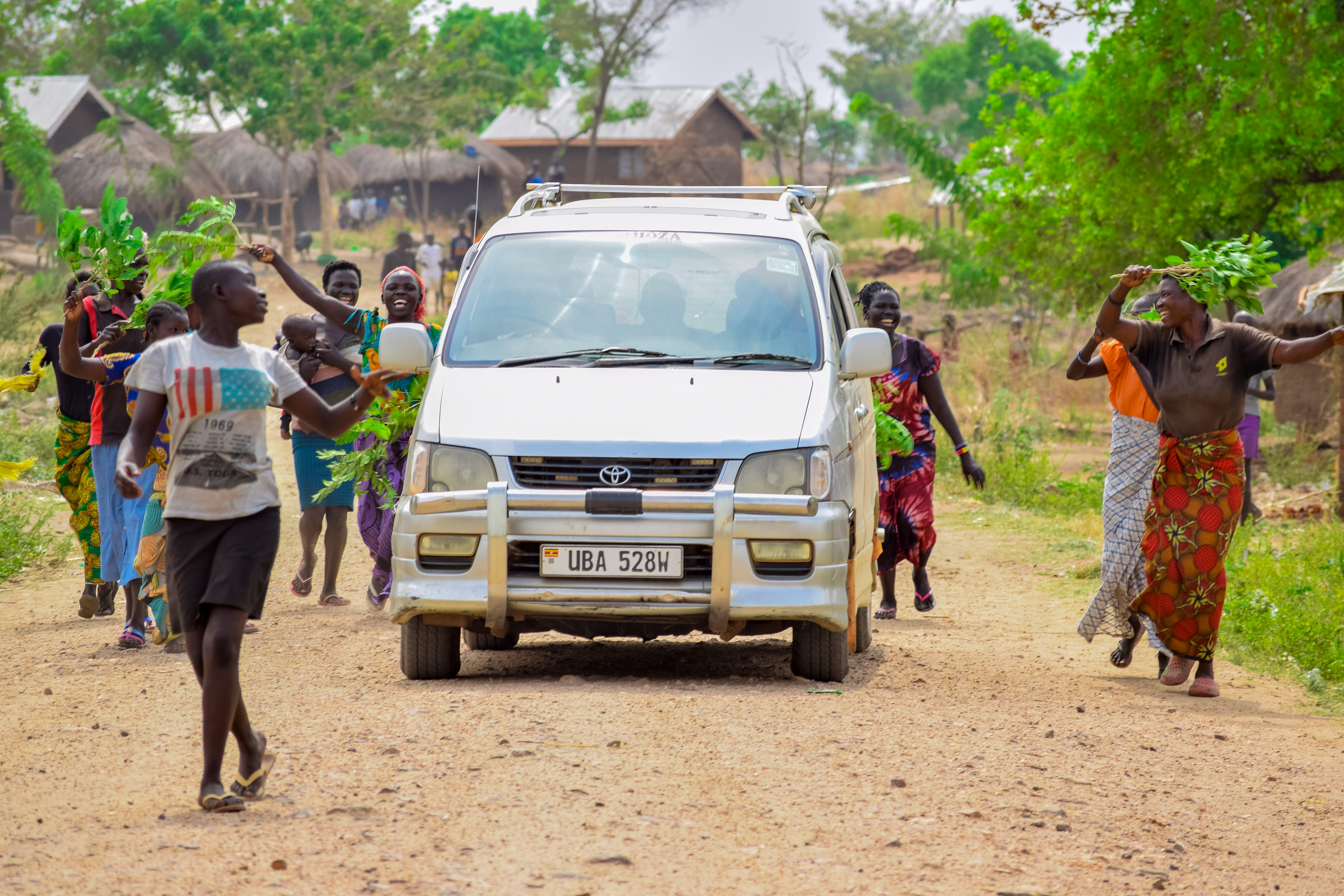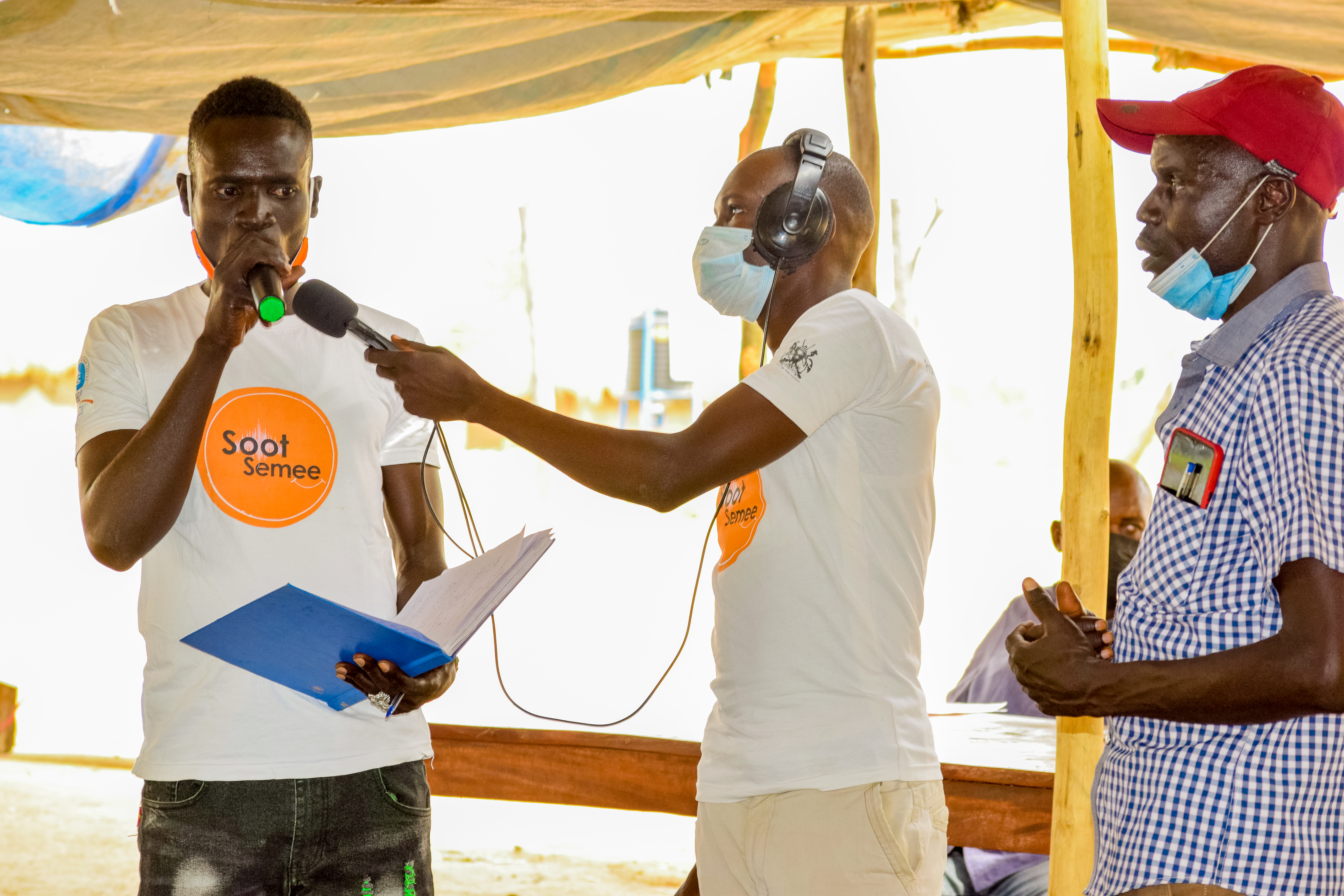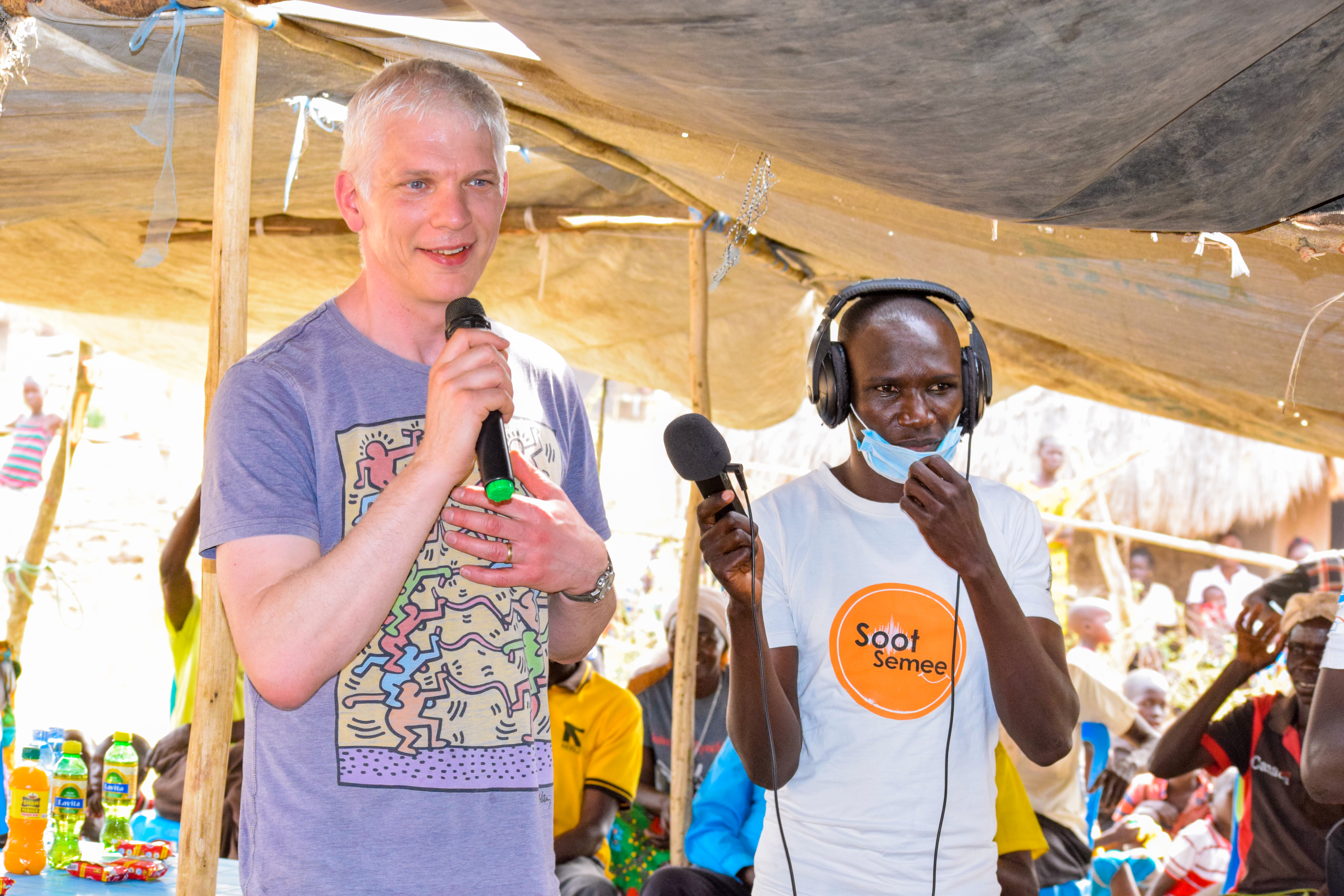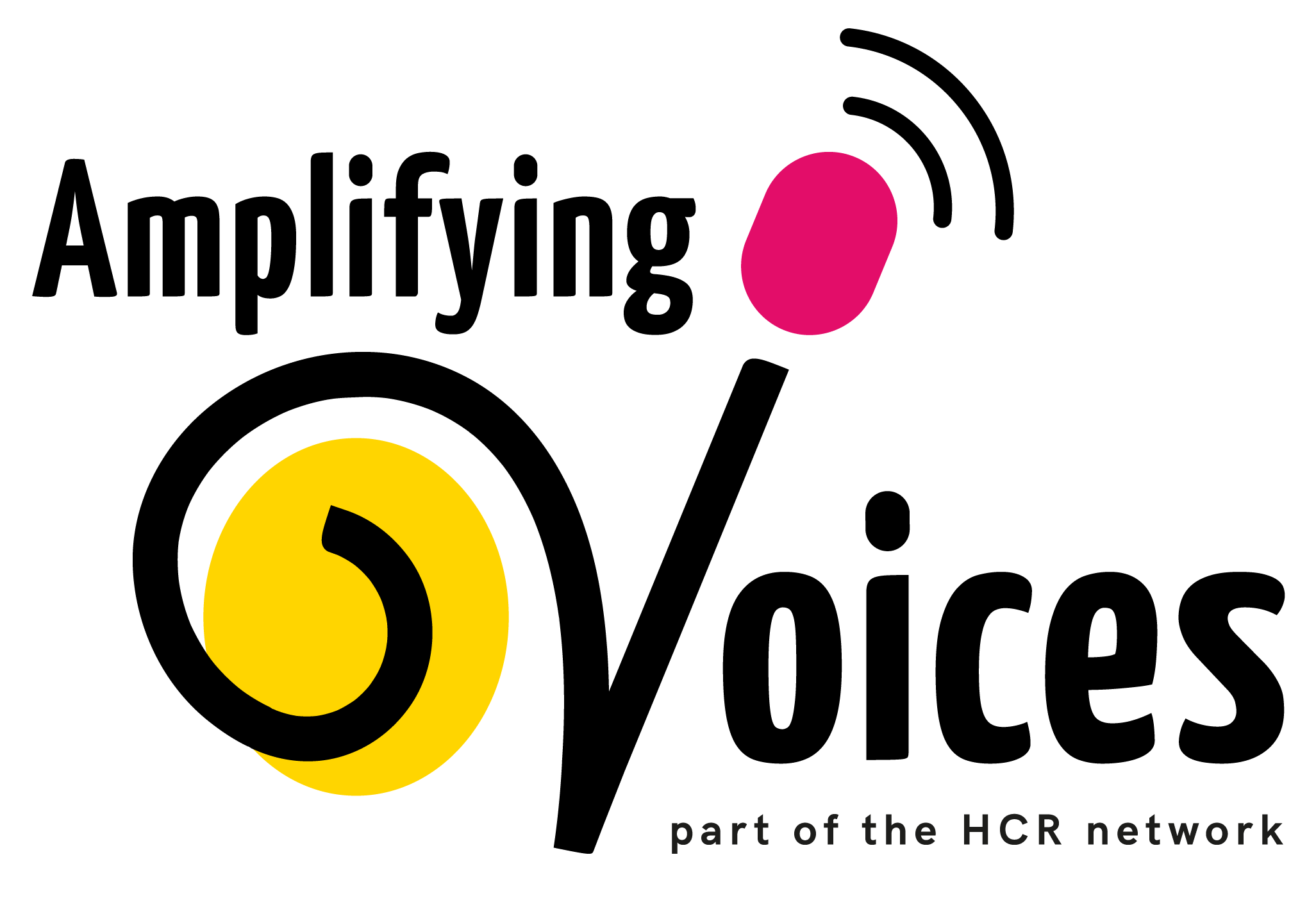
Soot Semee – Two years of building peace
Just over two weeks ago, I made my first face to face visit with partners since Covid started. I got to join in a special event near Arua, northern Uganda to celebrate two years of building peace in Omugo 4 village.
I joined our partners, Community Development Centre (CDC Uganda) on a trip to the Omugu 4 village to celebrate the 2nd anniversary of Soot SemeeSoot Semee means “Voice of Compassion” in Juba Arabic podcast production. 111 episodes of the community-centred podcast have been produced and distributed since January 2020. We arrived a bit late but we were welcomed enthusiastically by Omugo 4 community members, and the event quickly got under way. A woman got everybody singing and then a local pastor said a prayer. A Soot Semee volunteer led proceedings and invited various project stakeholdersstakeholders are people who are affected by the project, or who have influence to affect the project to speak. The speeches were a fantastic opportunity to hear from a diversity of voices about the impact Soot Semee has been having. The Soot Semee team were on hand to record the speeches for the next podcast. And then there was dancing …

Some women from Omugo 4 welcome our vehicle, Omugo, 2022.
Some speakers were refugee settlers from Omugo 4 who listened to Soot Semee. Some were members of the Ugandan host community who also listen to Soot Semee.

Soot Semee volunteer comperes event, while another volunteer records for the next podcast. Omugo, 2022
I learned that there are 12 women and 6 men who are volunteers gathering content to produce Soot Semee programmes .We’ve always described the Soot Semee programmes as “podcasts” because they are digital files stored on memory cards and played on digital audio players or “speakerboxes”. I learned that, in Omugo 4, Soot Semee is described as a “community radio”, and that speakerboxes are just called “radios”.
We heard several people say Soot Semee has been successful in building peace among refugees in Omugo 4 village, and also between refugees and host community members.
“These programmes have really changed the people of Omugo 4. As you also talk of unity. As you come here you will see youth, women, elderly, they all come together. And there is also formation of [listener] groups as a result of this radio. If you come to Omugo 4 there are a lot of groups. Even in the host communities.”
(Ugandan community member)
“Since 2019, Soot Semee do wonderful things in this community of Omugo 4. Back then there were divisions, but since Soot Semee came, we are together now. Back then the refugee community and the host community have been in different positions, but right now because of Soot Semee they have become as one family.”
(South Sudanese community member, Soot Semee Council of Reference)
The representative of the Ugandan prime minister’s office (OPM), responsible for overseeing the settlements, said that he used to see a lot of bruised faces in Omugo because of fighting, but now “they are shiny”.
One area of conflict, gender-based violence (GBV), got special mention because of the huge reduction in cases. The Ugandan police official responsible for responding to cases of conflict and domestic violence in the Omugo villages said,
“All of you are talking about cases of GBV are being reduced. I’m very very happy that my workload has been reduced. … I am stood up to show appreciation that the workload has been reduced for me. Let the radio continue.”
(OC, Omugo Zone)
Maybe you want a more scientific measure for this outcome, but what I heard were huge cheers and claps, especially from women in the group, when reduction of GBV was mentioned, and a mood that indicated that GBV is considered unacceptable and should be eradicated. Through the mix of “on-air” Soot Semee content, and “off-air” activities of other service providers, GBV is being rejected as a social norm in and around Omugo 4.
The officials, listeners, and volunteers all took the opportunity to tell me they wanted Soot Semee to continue building peace and to grow in its influence, hopefully with more input from CDC and Amplifying Voices.
Another comment from the OPM:
“When Soot Semee came to our office there, we gave them a stone. They threw their stone and the stone landed in Omugo 4. Who of you has ever thrown a stone in the water? How do the waves go? They go up the end of the river. So that means that Soot Semee should go to the end of the Omugo Zone. All villages in Omugo should receive Soot Semee.”
For young people, learning journalism skills has given them a real sense of purpose. They want to learn more. One of the volunteers said that he valued being trusted by the community. A community leader said he wanted to see the young people who currently report on local community issues to even go to Nairobi and report on issues there. But they are limited by resources, for example some volunteers don’t have mobile phones to be able to find out about local stories. Volunteers need to find ways to balance the time required for gathering community content and dealing with their own personal situations. This is a challenge for the project developing in a sustainable way.
I was asked to speak too. As I passed on greetings and congratulations from our team and supporters in the UK, I also picked up on the reports from community members that people are buying their own speakerboxes to be able to listen to Soot Semee, and others are downloading Soot Semee on to phones. Through local resolve and local initiative, the waves from the stone are already rippling out. We are honoured to walk alongside CDC and the Soot Semee team as they explore where this takes them.

As we mentioned last month, one potential new direction for Soot Semee is the route of return, back into South Sudan. As part of that exploration, I also visited Yei in South Sudan where CDC first got started. CDC South Sudan would like to introduce community-centred media in Yei and some outlying towns, building peace among settlers, returnees, and internally displaced people. We’ll pick up on that story in a couple of weeks time …
